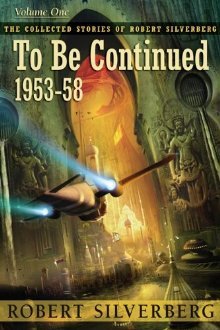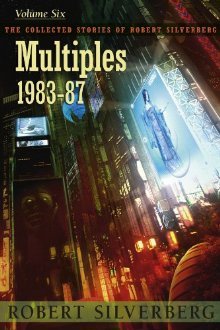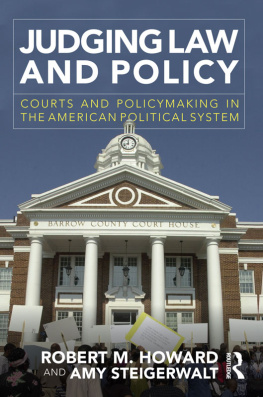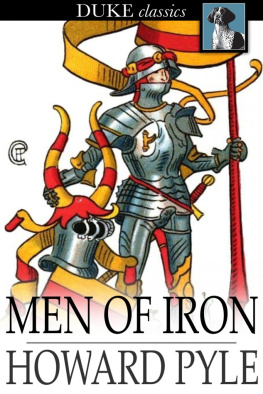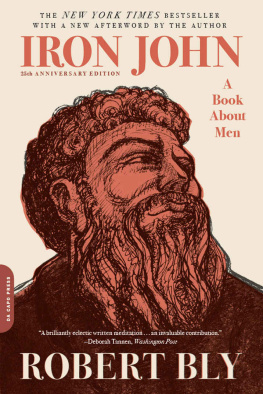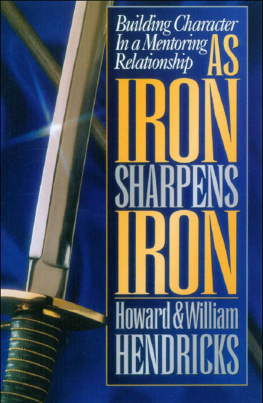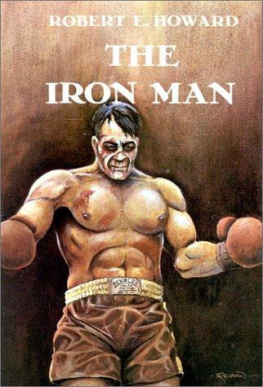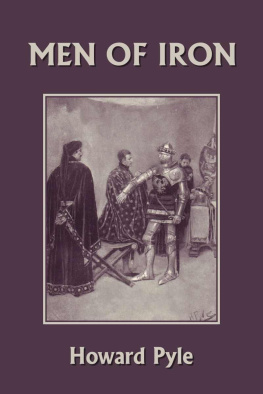Barakaldo Books 2020, all rights reserved. No part of this publication may be reproduced, stored in a retrieval system or transmitted by any means, electrical, mechanical or otherwise without the written permission of the copyright holder.
Publishers Note
Although in most cases we have retained the Authors original spelling and grammar to authentically reproduce the work of the Author and the original intent of such material, some additional notes and clarifications have been added for the modern readers benefit.
We have also made every effort to include all maps and illustrations of the original edition the limitations of formatting do not allow of including larger maps, we will upload as many of these maps as possible.
THE GREAT IRON TRAIL
The Story of the First Trans-Continental Railroad
ROBERT WEST HOWARD
SECTION ONE THE FAR PACIFIC SHORE
All hail, thou western world! by heaven designed
Th example bright to renovate mankind.
Soon shall thy sons across the mainland roam
And claim, on far Pacific shores, their home;
Their rule, religion, manners, art convey
And spread their freedom to the Asian sea.
-Timothy Dwight, Greenfield Hill (1794)
CHAPTER 1 PREDESTINATION, 1836
Intimates are predestined... Henry Brooks Adams.
During 1836, the American passion for individual freedom and home rule exploded across the Far West. Texas declared its independence from Mexico on March 2, tortured through the massacres of the Alamo and Goliad, defeated Santa Anna at San Jacinto in April, and inaugurated General Samuel Houston as first president of the Texas Republic in October.
That same summer the ranchers and herdsmen of Taos, New Mexico, organized a revolt that swept on to a massacre of Mexican officials in Santa Fe and the inauguration of a full-blooded Indian as governor of an autonomous State of New Mexico. During November another ranchers revolt drove Mexican officials out of Monterey and San Francisco and proclaimed the Free and Sovereign State of Alta California.
Far to the north, between April and September of 1836, the Reverend Marcus Whitman and a group of Congregational missionaries drove the first wagon train across the Rocky Mountains South Pass, then walked northwest through the Snake and Columbia river valleys to establish the Oregon Trail.
The governments of the New Mexico and Alta California revolutions survived only a few months. But their meaningfulness was as clear to Boston and New York shipmasters and New Orleans cotton factors as it was to the fur dealers, Santa Fe traders and frontier farmers hoping for the renomination of Thomas Hart Benton for a fourth term as United States Senator from Missouri.
In 1818, as the boyish editor of the St. Louis Enquirer , Benton had written a series of editorials about The Passage to India. The rivers emptying into the big and muddy Missouri, he forecast then, would become what the Euphrates, the Oxus, the Phasis and the Cyrus were to the ancient Romans: lines of communication with Eastern Asia, and channels for that rich commerce which, for 40 centuries, has created so much wealth and power wherever it has flowed.
Glibly, Benton adapted the ancient Norse and British dream of Northwest Passage to the Mississippi-Missouri river system. He advocated a series of canal locks up the Missouri to the Great Falls of the Montana. Westward, a portage road could be built across the Rockies to the valley of the Snake. This, he envisioned, assured the road to India and a throughway for trade between Europe and the Orient St. Louis would, of course, become its eastern portal and remain the Queen City of the West.
Bentons editorials, like his speeches in the Senate, presumed that the United States would somehow annex the Far West territories of Mexico. This vision of a Union of American States extending across the midriff of the continent3,200 miles from the Atlantic to the Pacificelicited an Amen from Maine to Georgia. Nantuckets whalers were already commonplace sights from the Siberian Coast to the Indian Ocean. New England missionaries in Hawaii and the other Sandwich Islands routinely shipped converts back to Connecticut for schooling in Christian ethics. That summer of 1836, the brig Pilgrim was one of the score of New England ships trading for hides and furs along the California Coast (One of the Pilgrims deck hands was a Harvard student named Richard Henry Dana. He spent off-duty hours scribbling details about the brutal life of the American sailor. The book he planned would be titled Two Years Before the Mast .) Ships out of Salem, Newburyport and Boston had been on the Canton run for two years. Their owners were financing a Washington lobby to persuade Congress to send a commissioner to Peking and open negotiations for an open-ports treaty with the Cheing emperor. Down south, cattlemen from the Tennessee highlands and cotton planters from the coastal plains ferried the Mississippi to pioneer new territories into states. The fierce Mountain Men out of St. Louis and Mackinac had pushed their search for beaver, mink and otter pelts southwest to Tucsons Presidio, due west to San Franciscos Presidio, and northwest to Oregons Astoria.
Thus most Americans believed that this vision of a transcontinental United Statesthe great New Greece of the Western worldwas right and natural. Yet disaster might follow unless roads were built and systems of intercommunication established between the Atlantic and the Pacific. Senator Bentons daring proposals for a canal-and-portage Northwest Passage between St. Louis and Oregon would achieve more than a trade route to India; the peace and harmony of that future United States of North America would depend on some type of throughway across the Rockies and the Great American Desert.
Amos Eaton, John Stevens, John B. Jervis and other professional engineers endorsed the theory. But they were beginning to realize that this Westward destiny of the United States seemed to operate on a strange new system of timetabling. A code had shaped, invention by invention, for four decades. Unlike the hour-and-minute timetables of the stagecoaches, canalboats, packets and mail carriers, the United States surge West was being scheduled by a timetable of new machines.
The Yankee tinkerer, Eli Whitney, first demonstrated this in 1793 when his invention of the cotton (en)gin enabled a speedy processing of short-staple upland cotton, so sent thousands of planters into the virgin deltalands of Alabama, Mississippi and Kentucky. Again, in 1797, Whitney shaped another timetable tool of Western destiny by inventing a rifle with interchangeable parts. The succeeding development of the machine tool and the assembly line influenced both commercial and military ventures west across Ohio, Indiana and Illinois.
Young Robert Fulton levered the frontier on to the fall lines of the Mississippi, Red, Arkansas and Missouri rivers in 1807 when his steamboat Clermont successfully chuffed up the Hudson from New York to Albany in thirty-two hours.





